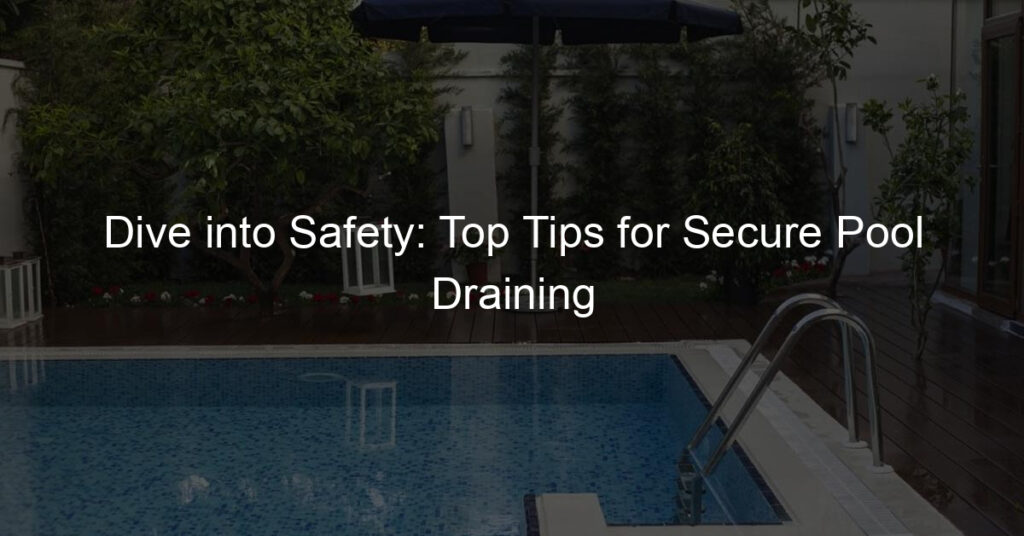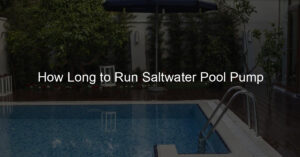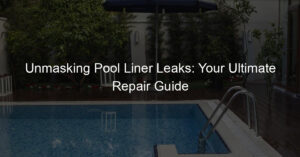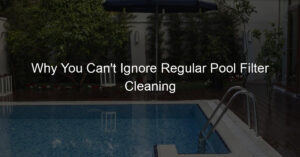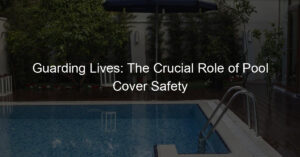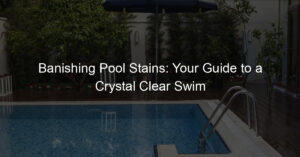Introduction to Pool Safety Measures
Swimming pools are a great source of fun and relaxation, especially during the hot summer months. However, they also come with certain risks and responsibilities. In this section, we will discuss the importance of pool safety and the common risks associated with pool maintenance.
- Understanding the Importance of Pool Safety
- Common Risks Associated with Pool Maintenance
Pool safety is crucial for everyone, especially for families with young children and pets. According to the Centers for Disease Control and Prevention, drowning is the leading cause of unintentional death for children aged 1-4 years. Therefore, it’s essential to implement proper safety measures to prevent accidents and ensure a safe and enjoyable swimming experience for everyone.
While maintaining a clean and healthy pool is important, certain risks are associated with pool maintenance. These include exposure to harmful chemicals used for cleaning, potential slips and falls due to wet surfaces, and the risk of electrical shock from pool equipment. Therefore, it’s important to follow safety guidelines when performing pool maintenance tasks.
In the following sections, we will delve deeper into specific pool safety measures, such as pool drain precautions, safe pool draining techniques, and best practices for pool drain safety. We will also share a case study to illustrate the importance of these safety measures in real-life scenarios.
Pool Drain Precautions: What You Need to Know
When it comes to pool safety, understanding the workings of your pool drain is crucial. This section will delve into the mechanics of pool drains and highlight some common issues that can arise.
Understanding Pool Drains
Pool drains are more than just outlets for water. They play a significant role in maintaining the cleanliness and safety of your pool. Let’s take a closer look.
- How pool drains work
- Common issues with pool drains
A pool drain works by pulling water from the pool, which then goes through a filtration system before it’s returned to the pool. This cycle helps keep the water clean and clear. The drain is usually located at the deepest part of the pool to ensure that the entire pool’s water gets circulated.
Despite their importance, pool drains can sometimes present problems. Some common issues include blockages and leaks. Blockages can occur when debris, such as leaves or toys, get stuck in the drain. This can lead to poor water circulation and a dirty pool. Leaks, on the other hand, can cause water loss and potentially damage the pool structure.
Understanding how your pool drain works and being aware of common issues can help you take better precautions. Remember, a well-maintained pool drain contributes to a safer and more enjoyable swimming experience.
Key Precautions to Take Before Draining
Before you start the process of draining your pool, there are some important steps you need to take. These precautions will ensure your safety and the longevity of your pool. Let’s take a closer look at these key precautions:
- Checking the Weather Forecast
- Inspecting the Pool for Damage
- Ensuring Proper Protective Gear
Before you begin draining your pool, it’s crucial to check the weather forecast. Draining a pool during heavy rain or storm can lead to various problems, including flooding and damage to the pool structure. It’s best to choose a day with clear skies and low wind conditions.
Next, you need to inspect your pool for any visible signs of damage. Look for cracks, leaks, or signs of wear and tear. If you spot any damage, it’s important to repair it before you start draining the pool. Draining a damaged pool can worsen the condition and lead to costly repairs.
Finally, make sure you have the right protective gear before you start the draining process. This includes gloves, protective eyewear, and sturdy shoes. These items will protect you from any potential hazards during the draining process, such as chemical exposure or slipping on wet surfaces.
By following these precautions, you can ensure a safe and efficient pool draining process. Remember, safety should always be your top priority when dealing with pool maintenance tasks.
Safe Pool Draining Techniques
Draining a pool safely is a crucial task that requires careful attention to detail. This section will guide you through the process, ensuring you can drain your pool without any issues.
Step-by-Step Guide to Safe Draining
Following a step-by-step guide can make the process of draining your pool much easier. Here are the steps you need to follow:
- Shutting off the Pool System
- Connecting the Drain Hose
- Monitoring the Draining Process
Before you start draining your pool, it’s important to shut off the entire pool system. This includes the pump, filter, and heater. By doing this, you prevent any damage to these components during the draining process.
Next, you need to connect a drain hose to the pool’s drain outlet. Make sure the hose is securely attached to prevent any leaks. The other end of the hose should be placed in a suitable drainage area, such as a storm drain or a large grassy area.
Once you start draining the pool, it’s crucial to monitor the process. This will help you spot any issues early on, such as leaks or blockages in the hose. Also, keep an eye on the water level. If it drops too quickly, it could damage the pool structure.
By following these steps, you can ensure that your pool is drained safely and efficiently. Remember, safety should always be your top priority when performing tasks like this.
Common Mistakes to Avoid
When it comes to pool safety, there are some common mistakes that many people make. These mistakes can lead to serious problems, including damage to your pool and potential harm to wildlife. Let’s take a closer look at these mistakes and how you can avoid them.
- Draining too quickly:
- Not checking for wildlife:
One of the most common mistakes is draining the pool too quickly. This can cause the pool’s structure to crack or even collapse due to the sudden change in pressure. It’s important to remember that draining should be a slow and gradual process. According to a study by the Pool & Hot Tub Alliance, it’s best to drain your pool at a rate of about one foot per hour. This gives the pool’s structure time to adjust to the changing water levels and helps prevent damage.
Another common mistake is not checking for wildlife before draining the pool. Small animals, such as frogs and mice, often use pools as a source of water and can become trapped when the pool is drained. Before you start draining, take a few minutes to check for any animals and remove them safely. This not only protects the animals but also prevents them from becoming a potential source of contamination in your pool.
By avoiding these common mistakes, you can ensure that your pool draining process is safe and effective. Remember, pool safety is not just about the people using the pool, but also about the environment around it. So, always take the necessary precautions and follow the recommended guidelines for pool draining.
Pool Drain Safety Tips: Best Practices
When it comes to pool safety, draining is a critical aspect that requires careful attention. After draining your pool, there are certain safety measures that you should follow to ensure the longevity of your pool and the safety of those around it. Let’s delve into these post-draining safety measures.
Post-Draining Safety Measures
After draining your pool, it is crucial to take two key steps: inspecting the pool for any damage and properly disposing of the pool water. Let’s take a closer look at each of these steps.
- Inspecting the Pool for Damage
- Properly Disposing of Pool Water
Once your pool is drained, it’s the perfect time to inspect it for any signs of damage. Look for cracks, leaks, or any other signs of wear and tear. These could potentially lead to bigger problems if left unattended. Regular inspection can help you catch issues early and save on costly repairs in the future.
Proper disposal of pool water is not just about being environmentally responsible, it’s also a safety measure. Pool water contains chemicals that can harm plants and wildlife if not disposed of correctly. It’s recommended to drain your pool water into the sanitary sewer system. If this isn’t possible, contact your local water treatment facility for guidance.
By following these post-draining safety measures, you can ensure that your pool remains a safe and enjoyable place for everyone. Remember, pool safety is a continuous process, not a one-time event. Stay vigilant and make safety a priority in your pool maintenance routine.
Regular Maintenance for Pool Safety
Keeping your pool safe is not a one-time task. It requires regular maintenance and attention to detail. Here are two crucial steps to ensure your pool remains a safe place for everyone.
- Regularly Checking Pool Equipment
Regular inspection of your pool equipment is vital for maintaining a safe pool environment. This includes checking the pool pump, filter, heater, and other equipment for any signs of wear and tear. If any part of your equipment is not functioning properly, it could lead to serious safety issues, such as poor water quality or even equipment failure.
For example, a malfunctioning pool pump could lead to stagnant water, which is a breeding ground for harmful bacteria and algae. Similarly, a faulty heater could cause the water temperature to rise to dangerous levels. Therefore, it’s important to regularly inspect your pool equipment and replace any parts that are not working properly.
- Keeping the Pool Area Clean and Free of Hazards
Another important aspect of pool safety is keeping the pool area clean and free of hazards. This includes removing any debris from the pool, such as leaves or toys, as these can create a slipping hazard. Also, make sure to keep the pool deck clear of any objects that could cause someone to trip and fall into the pool.
Additionally, it’s important to regularly clean the pool water to prevent the growth of harmful bacteria and algae. This can be done by using a pool vacuum or a pool skimmer. Also, make sure to regularly test the pool water for the correct chemical balance. If the water is not properly balanced, it can cause skin and eye irritation, and it can also lead to the growth of harmful bacteria and algae.
In conclusion, regular maintenance is key to ensuring pool safety. By regularly checking your pool equipment and keeping the pool area clean and free of hazards, you can help ensure that your pool remains a safe and enjoyable place for everyone.
Case Study: Ensuring Pool Drain Safety
Let’s delve into a real-life example that highlights the importance of pool drain safety. This case study will provide a clear picture of the potential hazards and the necessary precautions to ensure safety around pool drains.
- Overview of the case study
- Key takeaways for pool safety
- Regular maintenance: Regular checks and maintenance of the pool drain system can prevent potential accidents. It’s essential to ensure that the drain covers are securely attached and not damaged.
- Compliance with safety standards: All pool drain systems should comply with the Virginia Graeme Baker Pool and Spa Safety Act. This act mandates anti-entrapment drain covers and other safety features.
- Education: Pool users, especially children, should be educated about the potential hazards of pool drains. They should be instructed not to play near or sit on pool drains.
In this case, a community swimming pool in a small town was the center of attention. Despite being a popular spot for families during the summer, it had an outdated pool drain system. The pool’s drain system lacked the necessary safety features, posing a significant risk to swimmers, especially children.
The local authorities decided to take action and upgrade the pool’s drain system. They installed a new anti-entrapment drain cover and ensured the pool’s drain system complied with the Virginia Graeme Baker Pool and Spa Safety Act. They also implemented regular maintenance checks to ensure the drain system’s safety.
This case study serves as a reminder of the importance of pool drain safety. Here are some key takeaways:
In conclusion, pool drain safety is a crucial aspect of overall pool safety. By implementing the right safety measures and educating pool users, we can ensure a safe and enjoyable swimming experience for everyone.
Conclusion: Safety Measures for Pool Drains
In this article, we’ve covered a lot of ground on the topic of pool drain safety. Let’s take a moment to recap the key points and understand why regular pool maintenance is so crucial.
- Recap of pool drain safety best practices
- The importance of regular pool maintenance
Firstly, we discussed the importance of having a safe pool drain system. We learned that pool drains can pose a serious risk if not properly maintained and secured. We explored various safety measures such as installing anti-entrapment drain covers, keeping the pool area clear of debris, and ensuring that the pool’s water level is maintained at a safe height.
We also delved into the importance of educating both adults and children about the dangers of pool drains. This includes teaching them not to play near the drains and to always supervise children when they are in or around the pool.
Regular pool maintenance is not just about keeping the water clean and clear. It’s about ensuring the safety of everyone who uses the pool. Regular checks and maintenance of the pool drain system can prevent accidents and ensure a safe swimming environment.
Pool maintenance includes regular cleaning, checking for cracks or damage in the drain covers, and ensuring that the pool’s water chemistry is balanced. It’s also important to have a professional inspect the pool drain system at least once a year to ensure it’s functioning properly and safely.
In conclusion, safety should always be the top priority when it comes to pools. By following the best practices and maintaining your pool regularly, you can ensure a safe and enjoyable swimming experience for everyone.

